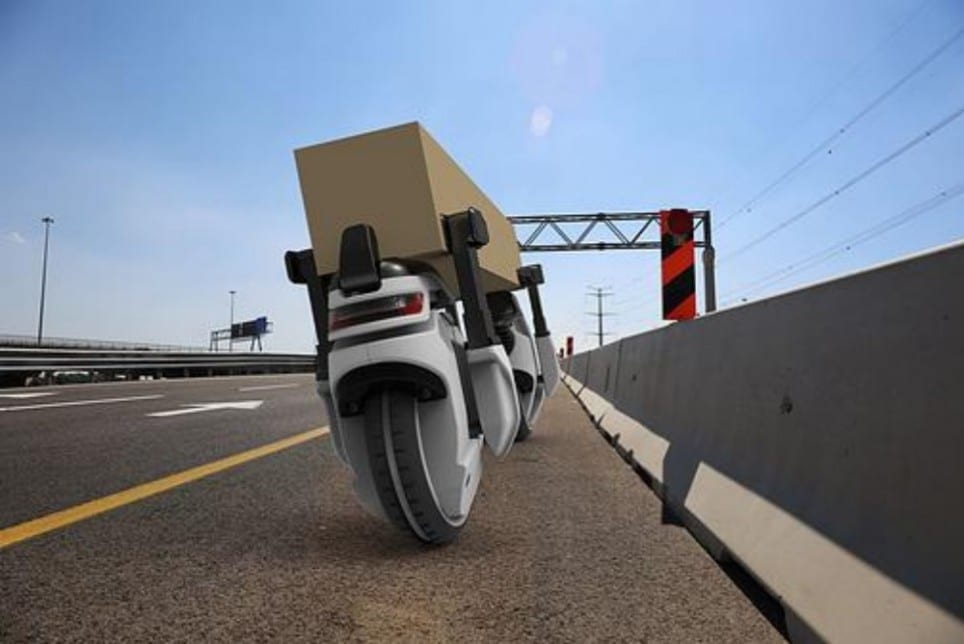
The focus of research on fusion power has moved from big government programs to startups with novel designs.
After three decades of expensive government-funded research that has failed to produce tangible breakthroughs, nuclear fusion has gone from a promising source of effectively limitless power to something more like a punch line.
In the past year, that has started to change, however. Several privately funded companies and small university-based research groups pursuing novel fusion reactor designs have delivered promising results that could shorten the timeline for producing a prototype machine from decades to several years. Commercial power generation from fusion is still a long way off, but the outlines of such a reactor can now be perceived.
Traditional fusion research has centered on large, doughnut-shaped machines called tokamaks, which exert powerful magnetic fields to compress high-temperature plasma—roiling balls of charged particles that fuse to form helium, releasing large amounts of energy in the process. The challenge is to contain the hot plasma and keep it stable; the fusion reactors of today, such as the one at the International Thermonuclear Experimental Reactor (ITER) project in southern France, use giant coils of electromagnets that consume much more energy than the machine actually produces. ITER (pronounced “eater”), which draws scientists and funding from China, the European Union, India, Russia, Japan, South Korea, and the United States, is projected to cost dozens of billions of dollars to produce a working reactor sometime in the 2030s. Maybe.
Two recent developments, offering new and faster pathways to energy-producing fusion reactors, have galvanized the fusion community. Tri Alpha Energy, based in Foothill Ranch, California, said in early August that it has succeeded in keeping a high-energy plasma stable for five milliseconds—much less than the blink of an eye, but “half an eternity” on the scale of fusion reactions, according to chief technology officer Michl Binderbauer.
Tri Alpha, says Binderbauer, is bringing the principles of high-energy particle accelerators, such as the Large Hadron Collider, to bear on the problems of fusion reactors. Specifically, the team has built a device, 23 meters long, that fires two clouds of plasma at each other to form a ring of plasma. The magnetic field that holds the ring together is generated by the plasma itself—a technique known as a field-reversed configuration. The plasma is sustained by the injection of high-energy particles from accelerators.
The challenge for Tri Alpha’s design, says Binderbauer, is “hot enough and long enough”—keeping the plasma stable at a high-enough temperature to achieve energy-positive fusion. The recent experiment indicated that the company—which has attracted millions of dollars in funding from investors including Goldman Sachs and Vulcan, the investment fund of Microsoft cofounder Paul Allen—has solved the long-enough problem. Making the plasma hot enough is the next key challenge. Next year, Tri Alpha will begin building a new and more powerful version of its experimental device to test the process at higher temperatures.
At MIT’s Plasma Science and Fusion Center, a group headed by Dennis Whyte, a professor of nuclear science and engineering and the center’s director, and graduate student Brandon Sorbom published a conceptual design in July for a machine called the ARC reactor (“affordable, robust, compact”). The novelty of the ARC design is the nature of the electromagnets that confine the plasma. Using recently developed, flexible superconducting tapes made of rare-earth barium copper oxide, the ARC reactor can achieve magnetic fields with much higher amplitude—thus enabling a reactor design much smaller than other tokamak-based machines. The researchers also envision a liquid “blanket” surrounding the plasma that will absorb neutrons without damage and provide an efficient heat-exchange medium to produce electricity.
Increasing the amplitude of the surrounding magnetic field raises the amount of fusion power produced in the plasma to the fourth power—a dramatic increase that could lead to a commercial prototype in a matter of years, according to Whyte.
“It’s well known that you can make very compact devices if you raise the magnetic field to very high levels,” he says, “but the electromagnets had to be copper—no superconductor could tolerate that magnetic field.” Now the advent of advanced superconductor tapes could enable a compact reactor that produces fusion continuously.
Read more: Finally, Fusion Takes Small Steps Toward Reality
The Latest on: Fusion power
[google_news title=”” keyword=”Fusion power” num_posts=”10″ blurb_length=”0″ show_thumb=”left”]
via Google News
The Latest on: Fusion power
- UK seeks industry partners for fusion power planton May 8, 2024 at 11:21 pm
The government has launched a competition to find industry partners for the UK's prototype fusion energy plant ...
- Taxpayers to fund fast-tracked nuclear fusion reactorson May 8, 2024 at 8:59 am
Pioneering nuclear fusion power plants are to be fast tracked through the planning process and supported with taxpayer money as Britain attempts to become a world leader in the technology. Under new ...
- National Fusion Facility Completes Upgradeon May 8, 2024 at 8:01 am
Enhancements will enable research into the physics of advanced fusion reactors and accelerate the drive to commercial fusion energy. The DIII-D National ...
- DIII-D National Fusion Facility Completes Upgradeon May 8, 2024 at 3:30 am
FPPs and future power plants will require much more powerful systems to create and drive the fusion reaction. The new, more efficient systems added to DIII-D will allow researchers to access plasma ...
- Researchers use superconducting material to make clean fusion energy breakthrough: 'Virtually limitless power production'on May 7, 2024 at 8:52 pm
Scientists at the MIT Plasma Science and Fusion Center reached what university press described as a "major milestone" in the realm of fusion power plants. The breakthrough could "usher in an era of ...
- An 'artificial sun' achieved a record-breaking fusion experiment, bringing us closer to clean, limitless energyon May 6, 2024 at 4:26 pm
WEST, a fusion reactor in France, broke a record for tungsten tokamaks with a 6-minute plasma. It's an important step toward clean, limitless energy.
- New Fusion Record Achieved in Tungsten-Encased Reactoron May 6, 2024 at 11:51 am
A fusion device ensconced in highly durable tungsten sustained a more energetic, denser plasma than previously recorded.
- Fusion record set for tungsten tokamak WESTon May 6, 2024 at 8:01 am
Princeton Plasma Physics Laboratory (PPPL) measured a new record for a fusion device internally clad in tungsten, the element that could be the best fit for the commercial-scale machines required to ...
- Private Investment Fuels Race For Nuclear Fusion Power In USon May 5, 2024 at 10:07 pm
Spurred on by major technological advances and huge private investment, the United States' nuclear fusion sector could be producing electricity within ten years, industry players say.
- Two seconds of hope for fusion poweron May 3, 2024 at 9:11 am
Using nuclear fusion, the process that powers the stars, to produce electricity on Earth has famously been 30 years away for more than 70 years. But now, a breakthrough experiment done at the DIII-D ...
via Bing News









